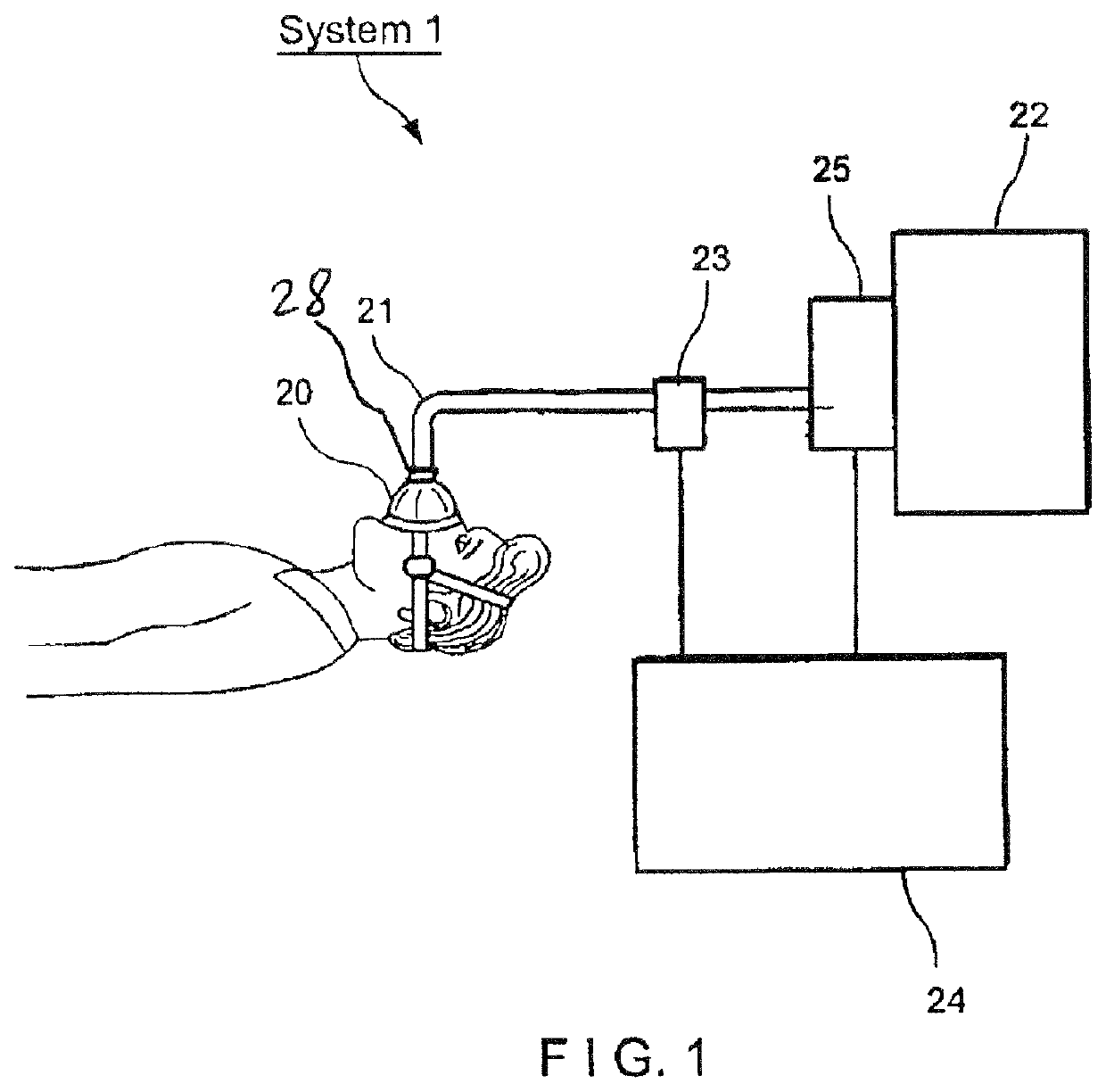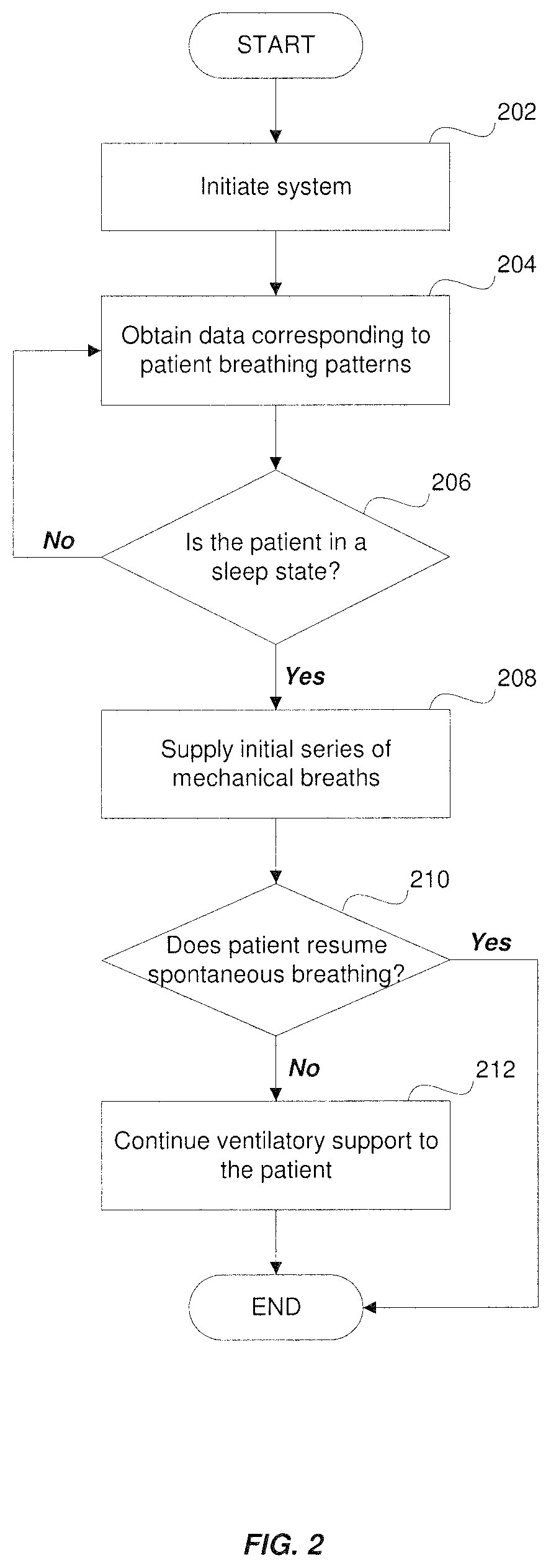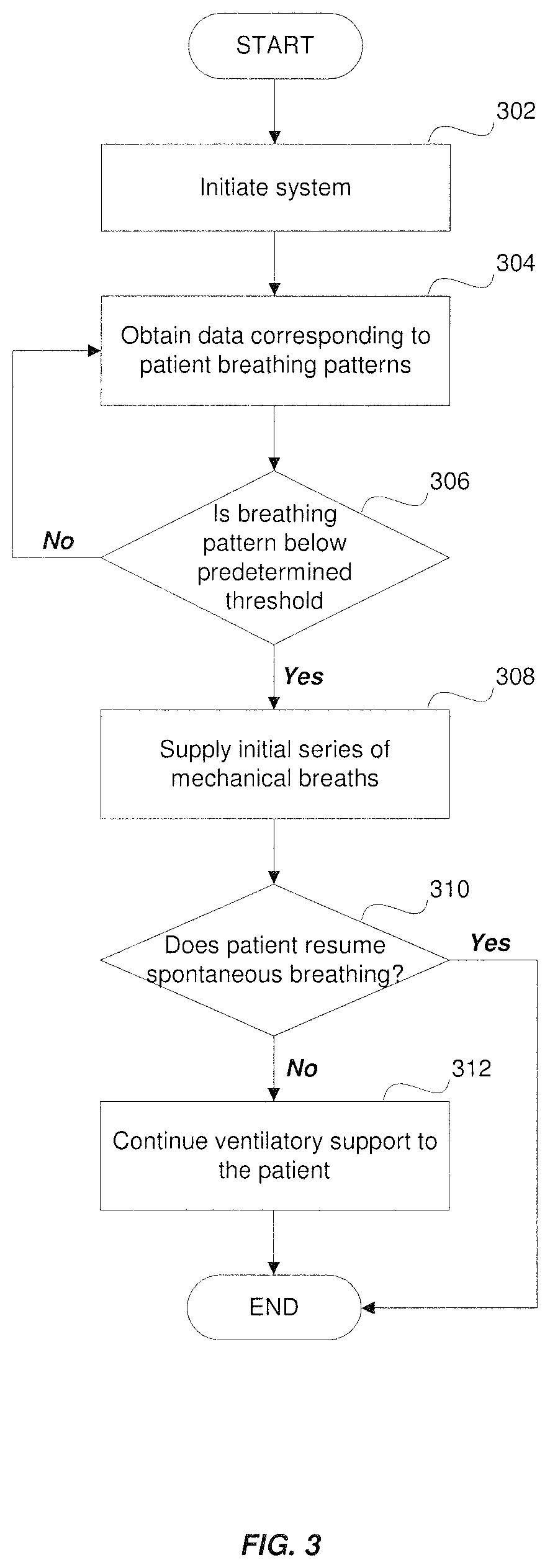Method and system for diagnosis and treatment of sleep disordered breathing of a patient
a technology for sleep disordered breathing and patient diagnosis, applied in the field of diagnosis and treatment of sleep disordered breathing, can solve the problems of increased mortality, large number of patients who previously may have avoided the medical establishment, and believed to be vastly different from each other
- Summary
- Abstract
- Description
- Claims
- Application Information
AI Technical Summary
Benefits of technology
Problems solved by technology
Method used
Image
Examples
Embodiment Construction
[0028]As discussed above, delivery of a constant level bi-level pressure to a patient may be insufficient during low levels of breathing effort, and that it is difficult to apply bi-level pressures that are based on rapidly changing breath-by-breath determination of the need for treatment. However, more general information such as the gross pattern of breathing may be readily detected and can be used for real-time determination of application treatment pressures. The exemplary embodiments provide systems and methods for diagnosis and treatment of SDB, more particularly non-obstructive SDB, such as for, example, CSR, hypercapnic hypoventilation, and OHS in a patient. For example, the systems and methods of the exemplary embodiments provide intermittent ventilatory support to a patient suffering from non-obstructive SDB characterized by irregular breathing patterns or insufficient breathing such that adequate breathing, either spontaneously by the patient or via assisted ventilatory s...
PUM
 Login to View More
Login to View More Abstract
Description
Claims
Application Information
 Login to View More
Login to View More - R&D
- Intellectual Property
- Life Sciences
- Materials
- Tech Scout
- Unparalleled Data Quality
- Higher Quality Content
- 60% Fewer Hallucinations
Browse by: Latest US Patents, China's latest patents, Technical Efficacy Thesaurus, Application Domain, Technology Topic, Popular Technical Reports.
© 2025 PatSnap. All rights reserved.Legal|Privacy policy|Modern Slavery Act Transparency Statement|Sitemap|About US| Contact US: help@patsnap.com



